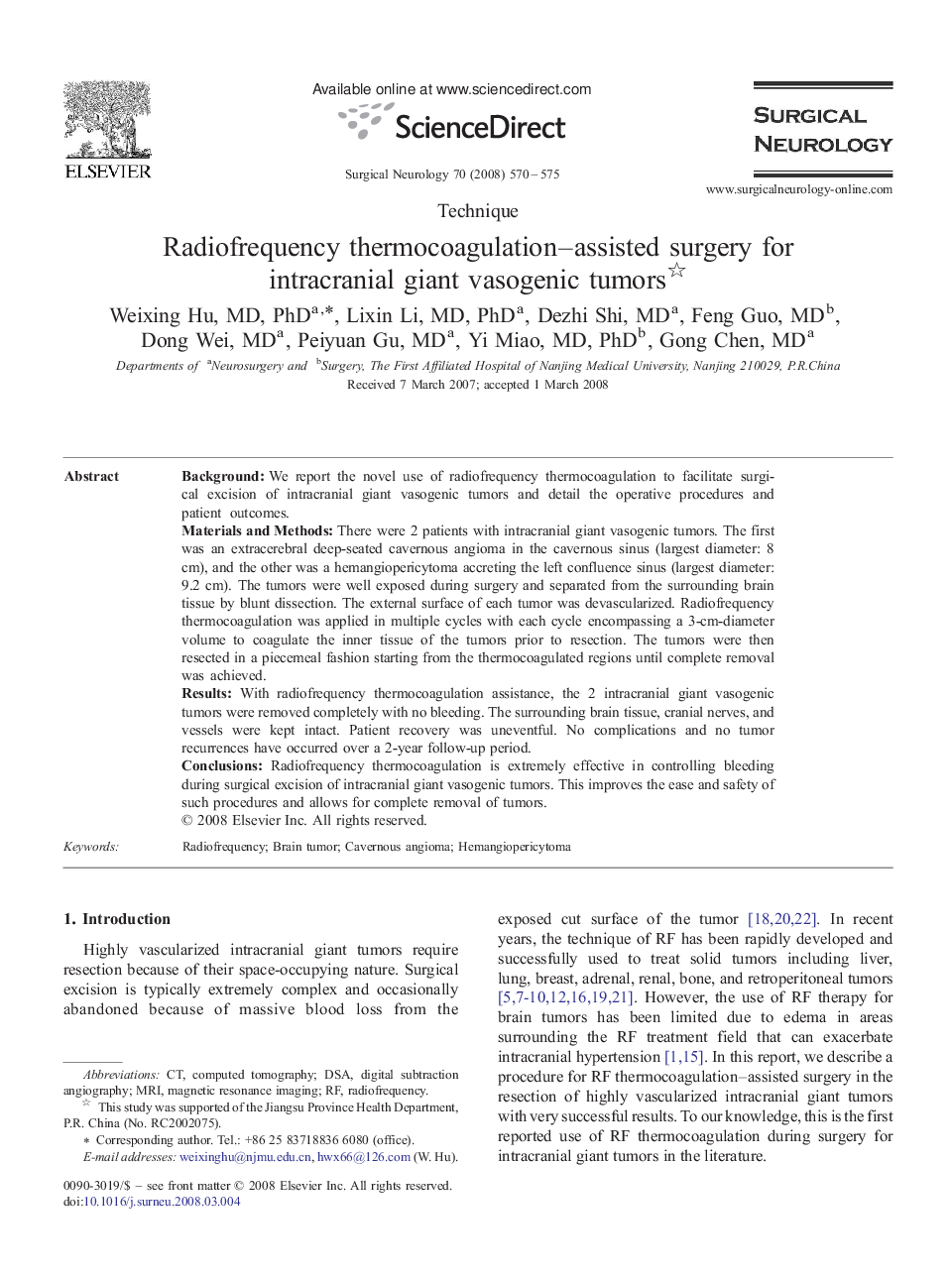| Article ID | Journal | Published Year | Pages | File Type |
|---|---|---|---|---|
| 3092683 | Surgical Neurology | 2008 | 5 Pages |
BackgroundWe report the novel use of radiofrequency thermocoagulation to facilitate surgical excision of intracranial giant vasogenic tumors and detail the operative procedures and patient outcomes.Materials and MethodsThere were 2 patients with intracranial giant vasogenic tumors. The first was an extracerebral deep-seated cavernous angioma in the cavernous sinus (largest diameter: 8 cm), and the other was a hemangiopericytoma accreting the left confluence sinus (largest diameter: 9.2 cm). The tumors were well exposed during surgery and separated from the surrounding brain tissue by blunt dissection. The external surface of each tumor was devascularized. Radiofrequency thermocoagulation was applied in multiple cycles with each cycle encompassing a 3-cm-diameter volume to coagulate the inner tissue of the tumors prior to resection. The tumors were then resected in a piecemeal fashion starting from the thermocoagulated regions until complete removal was achieved.ResultsWith radiofrequency thermocoagulation assistance, the 2 intracranial giant vasogenic tumors were removed completely with no bleeding. The surrounding brain tissue, cranial nerves, and vessels were kept intact. Patient recovery was uneventful. No complications and no tumor recurrences have occurred over a 2-year follow-up period.ConclusionsRadiofrequency thermocoagulation is extremely effective in controlling bleeding during surgical excision of intracranial giant vasogenic tumors. This improves the ease and safety of such procedures and allows for complete removal of tumors.
